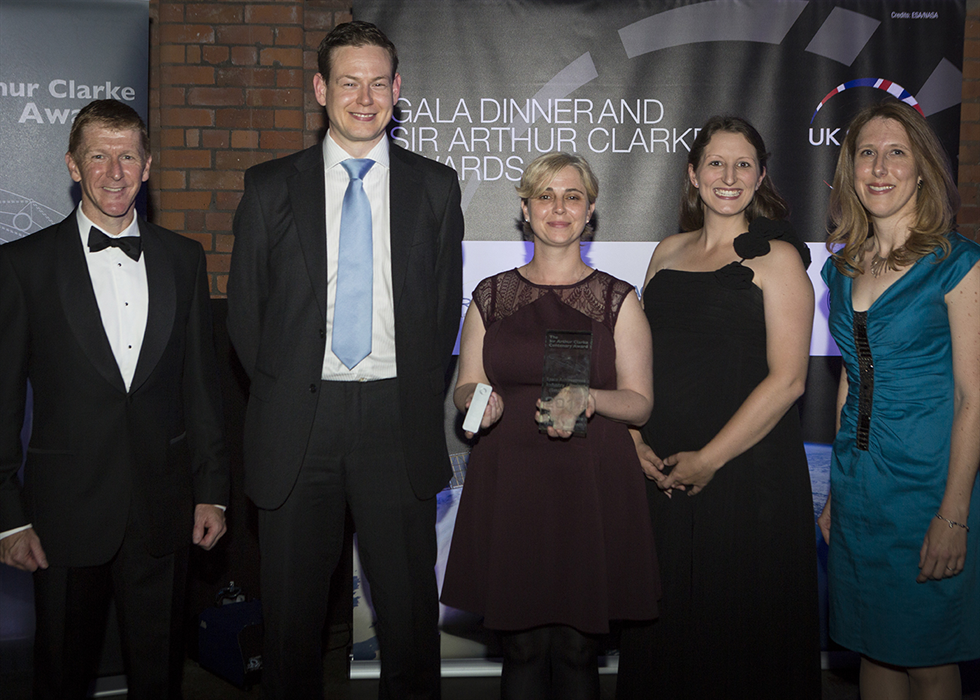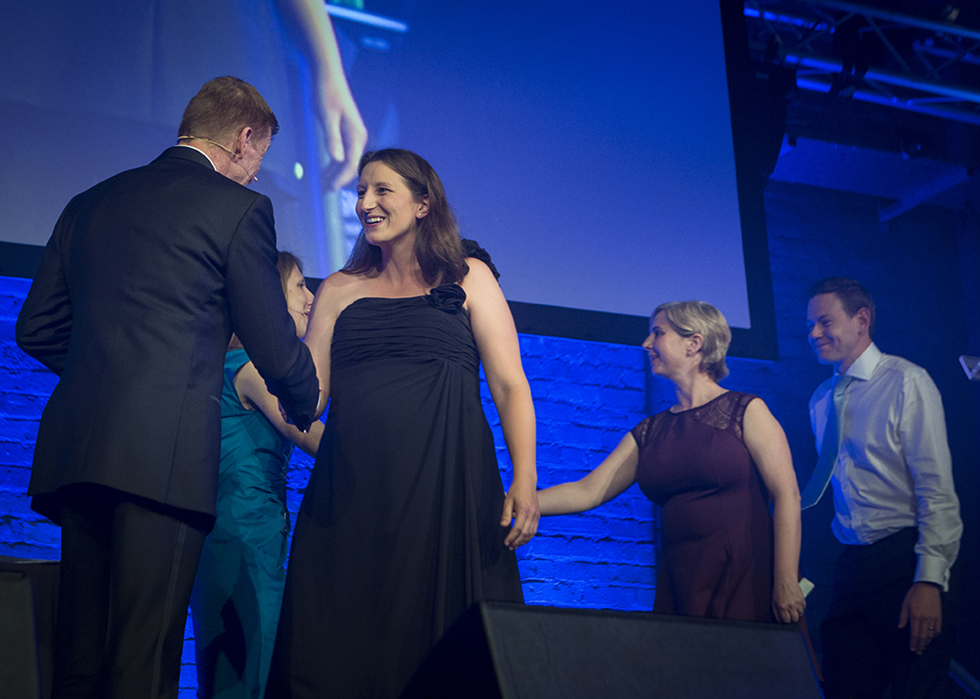DNA sequencer project wins Arthur C. Clarke Award
2017-06-13
NASA’s Johnson Space Center and Oxford Nanopore Technologies’ MinION™ DNA sequencing team were honored with the prestigious Arthur C. Clarke Award during a reception in Manchester, England, on May 31.
Established in 2005, the award is given by the British Interplanetary Society and bestowed upon a team that demonstrates an important contribution to space exploration.
“It’s nice to get international recognition for our efforts to advance human space exploration,” said Principal Investigator Aaron Burton, Ph.D., with Johnson’s Astromaterials Research and Exploration Science Division. “It lets you know that people out there are paying attention and this is a big deal.”
The award’s namesake was a renowned British science-fiction writer, made most famous by his novel “2001: A Space Odyssey.” The Johnson team was one of three finalists in the Space Achievement -Industry/Project Team (small projects) category.
The sequencing project was a part of Johnson’s 5x2015 initiative, created by JSC Director Ellen Ochoa, Ph.D, in 2015 to send exploration prototypes to the International Space Station (ISS). This initiative tests a streamlined development process for flight projects.
The miniature DNA sequencer, called the MinION™, was developed by the UK-based company Oxford Nanopore Technologies and sent to the space station as part of the Biomolecule Sequencer project; the first experiment took place in August 2016.
“The sequencer is a little bigger than a thumb drive and is operated with a Surface Pro 3 tablet,” Burton said. “This technology is a much smaller and cheaper platform than conventional sequencers that are bench-top size or larger.”
Burton noted that in past years, samples would have to be sent to labs with large sequencing equipment that had the necessary processing power.
“Now you can take the sequencers to the samples,” Burton said. “This means all the work can be done on-site. This is beneficial to scientists on Earth as well as the space station.”
Burton said the next step will be to sequence DNA from samples that are collected aboard the space station. This will be done using cells isolated from bacterial colonies, which will be used as the DNA input for the sequencing process.
“DNA from the colonies can be prepared for sequencing, and sequenced, entirely on the ISS without having to bring anything back to Earth,” Burton said. “We will be able to identify the bacteria and other microbes in a matter of hours, rather than months.”
Learn more about Johnson’s “X” projects here.
Learn more about the British Interplanetary Society: http://www.bis-space.com/what-we-do
Madison Tuttle
NASA Johnson Space Center
Established in 2005, the award is given by the British Interplanetary Society and bestowed upon a team that demonstrates an important contribution to space exploration.
“It’s nice to get international recognition for our efforts to advance human space exploration,” said Principal Investigator Aaron Burton, Ph.D., with Johnson’s Astromaterials Research and Exploration Science Division. “It lets you know that people out there are paying attention and this is a big deal.”
The award’s namesake was a renowned British science-fiction writer, made most famous by his novel “2001: A Space Odyssey.” The Johnson team was one of three finalists in the Space Achievement -Industry/Project Team (small projects) category.
The sequencing project was a part of Johnson’s 5x2015 initiative, created by JSC Director Ellen Ochoa, Ph.D, in 2015 to send exploration prototypes to the International Space Station (ISS). This initiative tests a streamlined development process for flight projects.
The miniature DNA sequencer, called the MinION™, was developed by the UK-based company Oxford Nanopore Technologies and sent to the space station as part of the Biomolecule Sequencer project; the first experiment took place in August 2016.
“The sequencer is a little bigger than a thumb drive and is operated with a Surface Pro 3 tablet,” Burton said. “This technology is a much smaller and cheaper platform than conventional sequencers that are bench-top size or larger.”
Burton noted that in past years, samples would have to be sent to labs with large sequencing equipment that had the necessary processing power.
“Now you can take the sequencers to the samples,” Burton said. “This means all the work can be done on-site. This is beneficial to scientists on Earth as well as the space station.”
Burton said the next step will be to sequence DNA from samples that are collected aboard the space station. This will be done using cells isolated from bacterial colonies, which will be used as the DNA input for the sequencing process.
“DNA from the colonies can be prepared for sequencing, and sequenced, entirely on the ISS without having to bring anything back to Earth,” Burton said. “We will be able to identify the bacteria and other microbes in a matter of hours, rather than months.”
Learn more about Johnson’s “X” projects here.
Learn more about the British Interplanetary Society: http://www.bis-space.com/what-we-do
Madison Tuttle
NASA Johnson Space Center









